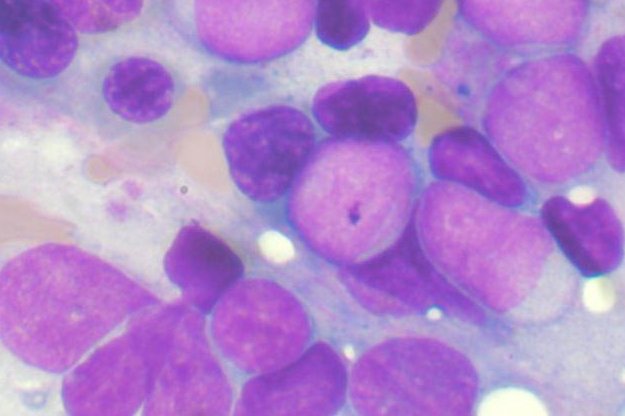In a new study, researchers found a way to identify people at high risk of developing the leukemia years before symptoms were noticed. Photo by VashiDonsk/
Wikimedia Commons
July 9 (UPI) -- Studying genetic changes in blood, researchers have found a way to identify people at high risk of developing acute myeloid leukemia several years before diagnosis.
In the study, published Monday in the journal Nature, researchers from around the world found changes in DNA can reveal the roots of AML in healthy people an average of 6.3 years before symptoms.
The researchers hope that methods of reducing the likelihood of developing the cancer will arise with earlier detection and monitoring of those at risk of AML.
"Acute myeloid leukemia often appears very suddenly in patients, so we were surprised to discover that its origins are generally detectable more than five years before the disease develops," first author Dr Grace Collord, of the Wellcome Sanger Institute and University of Cambridge in England, said in a press release. "This provides proof-of-principle that it may be possible to develop tests to identify people at a high risk of developing AML."
Researchers at the European Bioinformatics Institute, the Princess Margaret Cancer Center in Canada and the Weizmann Institute in Israel also contributed to the study.
Acute lymphocytic leukemia is a cancer of the blood and bone marrow, which is the spongy tissue inside bones where blood cells are made.
There are about 19,520 new AML cases each year and 10,670 deaths each year -- with the average age of diagnosis coming at 68.
The researchers note that the mortality rate is 90 percent when diagnosed after 65, and most cases have no detectable early symptoms.
The scientists sequenced stored blood DNA from 124 AML patients and 676 people who remained free from AML or a related cancer, finding that many who went on to develop the disease had genetic changes that set them apart from those who did not have the cancer.
Focusing on selected genes known to be associated with AML, the researchers found those who developed the disease had a higher number of mutations found in a larger levels of their blood cells.















